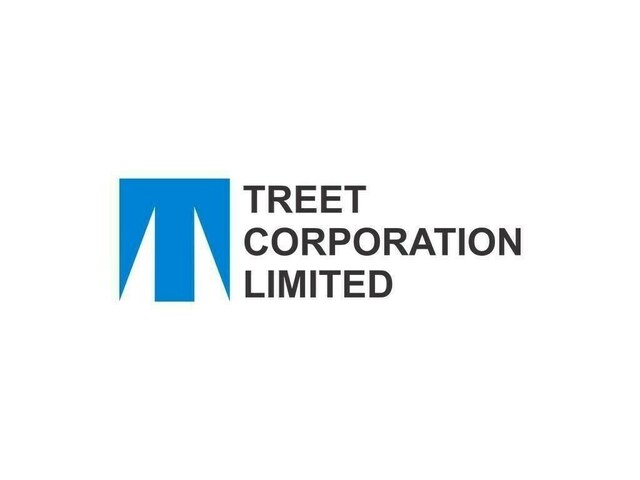Copyright brecorder

As Treet Corporation Limited (PSX: TREET) enters FY26, the company stands on firmer ground following a strong financial and operational recovery in FY25. Its entry into the premium shaving segment with the launch of Genesis for men and Estela for women marks a major strategic step, coinciding with Gillette Pakistan’s market exit and creating room for a capable local leader to fill the gap. With an 85 percent share of the organized shaving market, a competitive cost base, and rising consumer confidence in domestic brands, Treet is well placed to capture new demand—particularly in the underdeveloped women’s grooming category. Supported by ongoing modernization, automation, and export expansion through its Dubai subsidiary, Treet is positioning itself for sustained growth and greater influence across both local and regional markets. TREET - Historical Performance Founded in 1949, Treet Corporation Limited has evolved from a blade manufacturer into a diversified group spanning razors, batteries, soaps, packaging, and pharmaceuticals. With an 85 percent domestic blade market share and exports to over 45 countries, the company combines legacy with innovation, adding products like Treet Shaving Foam and solar-specific batteries while pursuing sustainability and efficiency. Over the past five years, Treet has shown resilience amid economic volatility through diversification and operational discipline. After COVID-led losses in FY20, the company rebounded strongly in FY21 with a 25 percent sales increase and improved liquidity through asset divestments and TPM rollout. FY22 saw margin pressure from higher input costs but continued growth in batteries, pharma, and corrugation. FY23 delivered a sharp recovery in sales and gross profit, though higher finance costs led to a net loss. In FY24, despite inflation and currency pressures, domestic sales grew 21 percent, helping offset weaker exports, while borrowings fell by Rs1 billion. In FY25, the razor and blade segment staged a strong turnaround, with net sales up 15 percent to Rs12.6 billion and gross margins improving to 36.5 percent from 29.7 percent. Operating profit rose 77 percent as finance costs dropped 35 percent, turning a loss into a Rs1.05 billion profit. Production held steady at 1.52 billion units, maintaining an 85 percent domestic share. New products and Industry 4.0 initiatives improved efficiency, while premium packaging and brand consolidation reinforced TREET’s competitive edge. Comparative Analysis: Treet Corporation Limited vs. Gillette Pakistan Treet Corporation emerges as a financially stronger, more efficient, and locally adaptive player. With superior margins, stronger liquidity, and deeper market penetration, it is well-positioned to capitalize on Gillette’s shrinking market share and a potential structural shift toward a distributor model. Combining profitability, scale, and brand innovation, TREET stands out as the likely long-term beneficiary in Pakistan’s grooming products market. Market Performance and Revenue Trends In FY25, Treet Corporation Limited has continued to demonstrate growth momentum, whereas Gillette Pakistan has seen its revenues contract for the second consecutive year. TREET’s sales are 7.3 times higher than Gillette’s, underscoring its dominant domestic footprint and diversified portfolio across blades, razors, batteries, soaps, and pharmaceuticals. The divergence in topline performance reflects price sensitivity among Pakistani consumers, as Gillette’s premium positioning has faced pressure amid declining disposable incomes and tighter household budgets. TREET’s broader product mix and competitive pricing appear to have helped it capture part of Gillette’s market share, especially within the mid-range shaving segment. Profitability and Margins TREET’s gross margin of 36.5 percent in FY25 contrasts sharply with Gillette’s 19.8 percent, highlighting superior cost control and manufacturing efficiencies. While Gillette slipped into a slight net loss, TREET maintained an 8.3 percent net profit margin during the year, demonstrating resilience and operational strength. This widening profitability gap suggests a shift by consumers from imported premium brands toward local alternatives, supporting the notion that price elasticity in grooming products has increased. Operational Efficiency and Financial Ratios Gillette’s high payable days in FY25 simply relaxed supplier terms from its global parent. If the company transitions to a distributor model, this dynamic will change — the distributor will need to absorb inventory and financing costs, which could lead to price increases in Gillette products and further strengthen TREET’s competitive position. Working Capital and Cash Cycle Both companies maintain elevated working capital cycles due to longer inventory holdings during FY25—a common trait in manufacturing operations—that help ensure production continuity. However, TREET’s shorter receivable cycle and disciplined payables management indicate more efficient cash conversion and better liquidity control. Outlook and Strategic Direction Treet Corporation Limited enters FY26 with a stronger financial and operational base following a sharp turnaround in FY25, when it reported a profit after tax exceeding PKR 1 billion and a gross margin of 37 percent — nearly twice that of Gillette Pakistan’s 20 percent. The company’s entry into the premium shaving segment with two new brands, Genesis for men and Estela for women, could not have been better timed, following Gillette Pakistan’s decision to wind up local operations and shift to a distributor-led model. According to company sources, the timing was coincidental, as product development had been underway for almost two years. TREET, long associated with value-conscious consumers and professional barbers, commands over 85 percent share of the organized shaving market, while Gillette’s share has fallen below 15 percent. The company is now broadening its portfolio to attract premium consumers who may seek reliable alternatives amid availability disruptions and pricing adjustments caused by Gillette’s transition. Its significant margin advantage underscores an efficient cost structure and the ability to compete across consumer tiers despite targeting different segments. A key feature of TREET’s expansion is Estela, Pakistan’s first dedicated women’s shaving brand — a bold entry into a largely untapped segment. Globally, women’s grooming has been a major growth driver, yet in Pakistan it remains underrepresented. The early success of Estela’s pilot launch across supermarkets and online platforms gives management confidence that a full-fledged women’s line will gain traction. If executed well, this could open a new long-term growth avenue and position Treet as a pioneer in inclusive personal care. The launch of Genesis and Estela aligns with shifting lifestyle and self-care trends, where grooming is increasingly viewed as a form of self-expression and wellbeing rather than a necessity. Beyond product innovation, TREET’s strategy includes modernizing manufacturing through an Industry 4.0 pilot, automation of razor assembly lines. These efforts, along with the company’s Dubai-based subsidiary, are expected to deepen its regional footprint — particularly in South Asia, the Middle East, and Africa, where mid-tier and premium grooming products are gaining share. The evolving consumer preference for locally manufactured brands, reinforced by geopolitical trends and a shift toward self-reliance, also supports TREET’s trajectory. High-end consumers seeking quality indigenous alternatives may increasingly shift toward local brands such as TREET’s, which combine international performance standards with better accessibility and pricing. After a period of volatility, TREET’s FY25 turnaround highlights improved fundamentals, cost efficiency, and disciplined debt management. Its ability to deliver strong profitability in a challenging macroeconomic climate — in contrast to Gillette’s losses during the same period — reflects its resilience and adaptability. With local manufacturing, expanding product diversity, and brand innovation, Treet is well positioned to consolidate its leadership in Pakistan’s grooming sector and gradually strengthen its foothold in the premium category left open by Gillette’s exit. Growth Drivers and Emerging Challenges Going forward, TREET’s prospects will depend less on incremental market share gains and more on its ability to evolve from a manufacturing-driven enterprise to a brand-led company. With cost leadership already achieved, the next phase of growth lies in strengthening brand equity, expanding recurring revenue streams, and enhancing customer engagement through digital and e-commerce channels. A sharper focus on regional exports could also redefine the company’s growth trajectory. Pakistan’s low penetration in regional FMCG and grooming markets — particularly in South Asia, the Middle East, and Africa — offers Treet an avenue to scale beyond currency-dependent domestic cycles. The Dubai hub, if strategically utilized, can serve as a base for localized product lines and private-label partnerships with regional distributors, helping diversify revenues and build resilience against domestic economic volatility. TREET’s diversified product base across grooming, batteries, and pharmaceuticals provides a natural hedge against volatility, but sustaining margins amid inflation and energy price volatility will require continued investment in automation, renewable energy, and R&D. Success in the premium and women’s segments could attract strategic alliances or licensing partnerships with international brands seeking local market access. For investors, the next inflection point lies in whether management can translate the current operational recovery into consistent earnings growth and free cash flow. A potential listing of subsidiaries such as the pharmaceutical or battery divisions could unlock value and enhance transparency. At the same time, the grey marketremains a structural challenge that can distort pricing and limit formal market growth. Similarly, competition from new entrants, exposure to export volatility, and domestic cost pressures could evaluate resilience. Treet will also need to guard against brand fatigue by sustaining innovation momentum and consumer relevance in a fast-evolving personal care landscape. From a broader industrial perspective, TREET’s evolution captures the transition underway in Pakistan’s manufacturing sector — from cost-based competition toward brand ownership, design-led differentiation, and regional ambition. If management sustains its innovation focus and operational discipline, Treet could well emerge as a regional case study in import substitution and homegrown brand development, cementing its place as one of Pakistan’s few indigenous success stories in consumer manufacturing.



